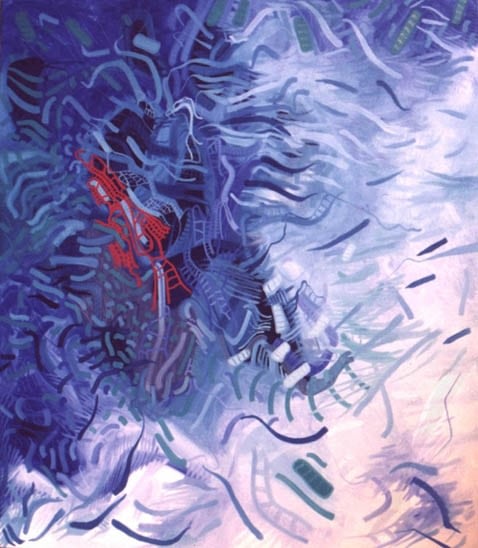
There are some shows where the spectator recognizes value in it because of the ideas that it espouses or by the trajectories of thought that are fuelled by the viewing of a particular piece or the entire show as one unit. And then there are some whose excitement lies in their simplicity, of being able to see the various canvases that an incredibly talented artist can produce. Nothing to really know, artist Sheila Makhijani's show at the Talwar Gallery, the first in the capital city after a five-year gap, falls in the latter category. "The moment I start with a work, I don't really know what'II emerge. That's why I called the show Nothing to really know," Makhijani said. Thirty-five works by the artist are on display at the gallery and are from different phases of her career. When this reviewer spoke to her, the artist was quick to make it clear that this was not a retrospective of her work. "A retrospective would require a chronological continuity and it has to be an extensive collection of works from every single period of my artistic career," Makhijani said. "We have collected works from different periods and put them together. Rather than making sure every phase or every period is represented, most of the works are from post-2010, but there is no particular reason for this. I guess the evolution of me as an artist is visible in the show at some level, but somehow also not there," she added.
Makhijani's works lay themselves bare for interpretation. Having said this, the titles of the pieces do provide a glimpse into what she feels about any particular work. As she told us, "I title them since I try to protect the work in my own way, because often l don't want to say too much. Also, I like to have titles because they become a part of the work in their own right." From "Yipee" a 1992 oil on paper to "Watch Out!', a 2013 steel wire, aluminum, and glass beads creation or even "Cha cha cha", a acrylic on handmade paper from 1999, the immense expanse of Makhijani's creativity is apparent throughout the show.
None of the works are too "heavy" or '"intense" and the lighter side of things is never too far away. The titles of the artworks again are a good example of this with "Cha cha cha': "Snip snap snap', "oops" or "This one has no choice," being a few of the labels she has decided to give to her work. "I started getting worried that people will misread them. Even I don't remember the titles of every single piece, but if you read them and then look at the work, I'm sure you'll get exactly what I'm trying to say." The textures and the use of multiple mediums and the tendency of the art, whether minuscule or in a large canvas to reach their own conclusions, work towards the "lightness" of the show as well.
Through the last three decades, the artist has experimented with different mediums including gouache, Japanese sumi ink, oil paints, and acrylics on handmade paper, and the exhibition is curated in a way where it travels through these different mediums. "Right on top", the graffiti she has created at the gallery's terrace is an apt finale to the show.
The works are spread out across six levels in the gallery and there is no smooth transition from one level to another. Rather, each level displays work either of a different medium, a different tonality, or the different point in time that it was created in. It is a "cleanly curated" show in one sense since both the artist and curator were aware of how words can spoil the viewing experience. The only writing is a one-page monologue by the artist which, like the show, is also called "Nothing lo really know'; and is posted along the stairs inside the gallery. The idea of "nothing to know" and the discontinuity associated with it comes out while walking through the gallery. And in terms of writing, apart from the text that is pasted, the titles of the artworks are given in a separate paper to anyone who is interested in knowing what they are.
Having spent time as an art student at Kanazawa, Japan in the early '90s, the work she produced after her stay there stand out from the rest of the show. “For years I was using only Sumi ink," Makhijani said. The works are created with sumi ink and orange ink, which she said, “the teachers in Japan use to correct Papels”. Some of these are displayed in a room of their own on the main level of the gallery and possess a pleasing continuity to them.
A straightforward artist, whose works speak for her foremost, Makhijani's exhibition makes for a refreshing change from fine art shows that are curated with too many palimpestual layers that a spectator gets muddled, rather than understand any one aspect clearly. As Makhijani herself says, "I cannot pretend to see certain things and I cannot say I'm doing this and can't do anything else. I see myself more as a tool and I'm comfortable letting the process take Its own course."
-Sibi Arasu